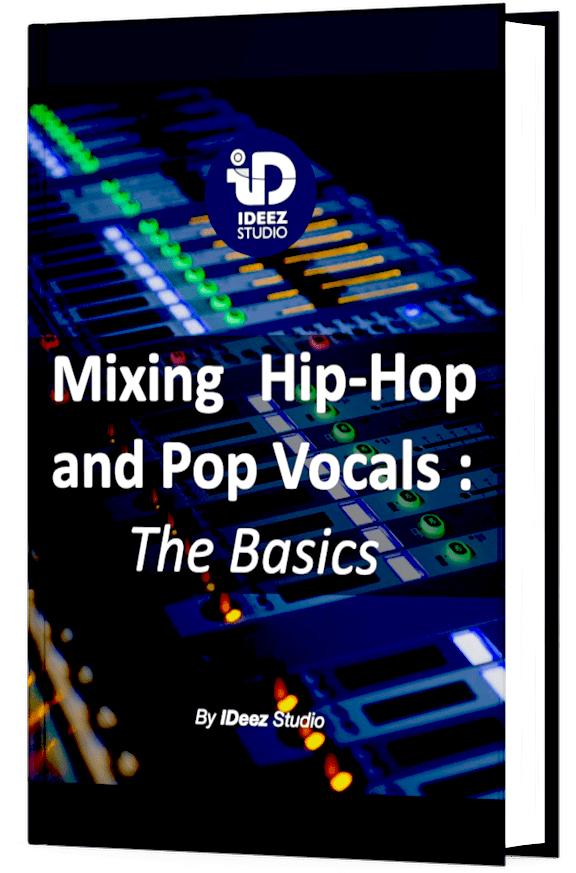Just bought a brand new Rode NT1-A and looking for tips on how to get the best sound from this mic ? Wondering why you’re not hearing the expected result ? You’re at the right place! In this article, we’re gonna list 6 ways to improve the quality of your recordings. You’ll see that, sometimes, simple things can drastically change the final result. So if you’re ready, let’s go!

A lot of people think that buying a good mic will instantly increase the quality of their recordings. In a way, it’s true. But on the other hand, you can lose a lot of quality just by not doing it the right way. Position, orientation, room reflections,… All these things can be extremely important to improve the sound quality of your NT1-A.

Here 6 tips to record better vocals with your Rode NT1-A:
- Use a pop filter
- Don’t record too close to the mic
- Don’t stand too close to the walls
- Point your NT1-A the right way
- Check out the gain of your interface
- Use your NT1-A with a good preamp
Ready to increase the quality of your recordings ? Heeere we go!

1. Use a pop filter

It may seem obvious to some of you, but sometimes people overlook the importance of a pop filter for their vocal recordings. A pop filter will allow you to filter out all the violent airflow created by consonants like, for example, the “p” or “b”. Since the NT1-A is a condenser mic, it will have no mercy on you for not having a pop filter.
The classic result of a vocal recording made without anti-pop is huge bass hits every time a “p” is pronounced. You don’t want that for your vocals!
Need a professional sound engineer specializing in pop and hip-hop mixing ? Great! Take a look at our services and let’s blow up your career together!
Let’s start now!
2. Don’t record too close to the mic
Here is the second most common mistake : Recording too close to the microphone. When you record vocals too close to your microphone, (whether it is a NT1-A or not) you will hear a significant boost in low frequencies. This is called the proximity effect.
Having too much bass in a vocal recording is rarely a pleasant thing, so it’s important to take some distance from your microphone in order to enjoy the most reliable and qualitative sound. But what is the ideal distance ?
For better vocal recordings, you should take between 15 and 20 centimeters (6 to 8 inches) of distance from your microphone. To have an easy reference, it is the distance between your thumb and your little finger when you hold them both.
In the best acoustically treated studios, the singers can sometimes move up to several dozen centimeters away. Yep, that’s a lot, but we don’t realize how much distance can give air and natural depth to the voice.


3. Don’t stand too close to the walls
In the field of music recording, wall necessarily means sound reflection. And in the case of a close recording, reflection often means unpleasant audio results.
If you record in a small room, you should use wall absorbers to capture and reduce reflections (we’ll talk about it later in this article). If your room is bigger (let’s say bigger than 15 square meters) try to place your microphone towards the middle of the room, but not right in the middle, to avoid any kind of resonance frequencies (we won’t dive into the explanation of resonance frequencies in this article).
Keep in mind that walls are to be avoided at all costs, but that the middle of your room can also be a trap for your vocal recordings. The diagram below will help you understand :

Don’t do it : Buy an affordable vocal booth. Those cheap booths are the best way to kill the reliability of your NT1-A, because they will create huge reflections and make your vocals sound extremely muddy.
ℹ️ Oh, by the way, do you know how to record vocals in Pro Tools? If not (or not enough), this article might interest you: How to Record Vocals In Pro Tools – Quick Guide
4. Point your NT1-A the right way
Ok, we start to go into details. And this is exactly where it becomes very interesting. In this point, we focus on the position and orientation of the NT1-A. Before diving into anything, it is important to know two things:
- Our body (in this case, our chest), constitutes a natural obstacle for the good propagation of sound. This natural physical principle results in an increase in the low end of the spectrum as we move closer to the chest
- It is scientifically proven that the way we place our chin while singing influences the color of the voice. Placing your chin close to your chest favors low notes, while moving it away from your chest favors higher notes.
Knowing these two principles, what can we learn from them to improve the quality of the recordings made with our Rode NT1-A ? The answer is quite simple : point your microphone higher, but always directed towards the singer’s mouth. This will allow you to :
- Get rid of the excess bass present near the chest
- Force the singer to raise his chin when he sings, to take full advantage of all the frequency range that his voice can deliver, especially in the high-end range.
This will help you visualize this ideal position :

5. Check out the gain of your interface
You can have the best microphone in the world, if you don’t adjust the gain of your preamp correctly, the result will always be catastrophic. But how do I know if my recording level is correct ?
In today’s audio world, everything is becoming very visual. You will rarely find interfaces or preamps without a visual element that gives you an idea of the level of your recording. If you don’t know much about audio, you can easily trust what you see on your interface, it’s there to help you! The universal colors are :
- Green : You’re good!
- Orange : Still good, but be careful though, because you’re close to clipping
- Red : You’re clipping! Turn down your gain knob to avoid any kind of distortion

ℹ️ Cleaning vocals is super important for a quality mix, and a recent tool might completely change the game: Waves Clarity Vx : The Future Of De-Noise ?
6. Use your NT1-A with a good preamp
When you think of quality recording, you probably think of a quality microphone. However, often forgotten, the preamp you choose is just as important as the microphone. If we were to establish a level of importance, we would have 50% for the microphone and 50% for the preamp.
This does not mean that you will always get poor quality sound from your Rode NT1-A if you do not use it with a good preamp. But you should be aware that if you are not satisfied with the quality you get, getting a preamp might be the right solution.
There are a lot of mic preamps on the market today. And most importantly, there is something for every taste.
ℹ️ If you want to find the perfect mic preamp for your recordings, I recommend you to read this article about The 9 Best Mic Preamps For Recording Vocals (Any Budget)
For the sake of history, a few years ago, I buy the Focusrite ISA One. And it completely changed the quality of my recordings, with an unbeatable quality-price ratio!

If we take two different situations
- In the first one, I record a voice with a U87 mic and a really bad preamp
- In the second one, I record the same source with my NT1-A and a very good preamp
I can guarantee you that the result will be very similar or even better in situation 2.
Need a professional sound engineer specializing in pop and hip-hop mixing ? Great! Take a look at our services and let’s blow up your career together!
Let’s start now!
Conclusion
Keep in mind that having a good microphone is the first step to better recordings, but that there’s a lot of different aspects that will drastically change the audio result. One of our tips may not work in your situation, this is normal, there is no absolute truth. The best way to progress in the audio field is to try different things over and over again while trying to analyze what you hear.
Please make sure ton contact me if you have any questions about the NT1-A or about anything in the field of music mixing or recording, I’m always very happy to help!
Related Articles:
My favorite tools for mixing pop and hip-hop music:
Plugins
In the field of auto-tune, I’m convinced that nothing’s better and more efficient than Antares Auto-Tune Pro. As for the EQ’s, FabFilter Pro-Q3 and Slate Digital Infinity EQ are, in my opinion, the best tools. For compression, I have 2 favorites plugins: Waves RComp and UAD EL8 Distressor.
As for reverb, I’m a big fan of the Soundtoys Little Plate, but generally, I go for the Valhalla VintageVerb for its versatility. I also love the Arturia Rev PLATE-140 and the UAD Pure Plate for its organic side.
Headphones
The closed headphones I love and will always love using for mixing pop and hip-hop music are the Beyerdynamic DT-770. As for the best open-back headphones, I use the Sennheiser HD600 headphones, and I’m really happy of them!
Monitors
Having a pair of Yamaha HS7 in its studio or home studio is always cool for more excitement while listening to your mixes. The Adam Audio T7V monitors are also super accurate. In my studio, I also have a pair of Genelec 8030 for their reliability.
Hardware gear
For anyone who wants to start using hardware in their mixes, I always recommend these 2 units from Klark Teknik: the EQP-KT and the 76-KT. Don’t forget to use good converters, such as the Apollo interfaces. This is essential for a good rendering.






